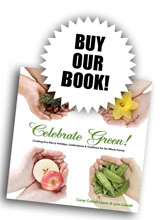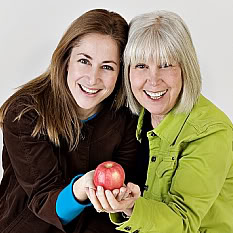Dye Easter Eggs With Food! (for Mothering.com)
How to Dye Eggs Naturally
What you’ll need:
- A variety of eggs, washed and dried
- Foods for dyeing (see below)
- Cardboard egg crate, wire rack, or shoe box lid with silver dollar sized holes (for drying eggs)
- 4 cups of water
- 2 tbsp of white vinegar
- Pots for cooking
- Strainer (for cold dyeing method)
- Beeswax crayons or rubber bands
- Tongs or slotted spoon
Dyeing Methods
Hot method. Combine uncooked eggs and ingredients for a single color in a large pot. Bring to a boil, then simmer for at least ½ hour (for deeper colors, simmer longer). Remove with tongs, pat dry, and place in a crate or on a rack or box lid. Once dry, rub with vegetable oil for a shine or leave with a matte finish.
Cold method. (Safer for younger children.) Boil eggs. Avoid overcooking so shells remain intact. Next, mix dye ingredients, boil, and simmer as above. Remove dye from heat, cool and strain, reserving dye in bowl. Carefully place hard-boiled eggs in dye and leave in for at least ½ hour (or longer for deeper color). Remove with tongs, pat dry, and place in a crate or on a rack or box lid. Once dry, rub with vegetable oil for a shine or leave with a matte finish.
You can create a variety of colors with a few ingredients by dyeing some eggs with the hot method, some with the cold, and varying the amount of time eggs are exposed to the dye.
Try the following natural dyes for a variety of tones
Begin by using approximately four cups of fruits and veggies, two tablespoons of white vinegar, and one tablespoon of spice for every four cups of water.
Adding more of the natural dye ingredient (in addition to a proportionately higher amount of vinegar) or soaking for longer (try overnight!) will create darker colors. Canned, fresh, and frozen fruits and veggies work, but fresh foods seem to result in the darkest hues.
As always, choosing organic and local foods is preferable. Be sure to eat, use, or compost any leftovers. Note that chemicals (such as chlorine) and minerals in your water may affect the dye’s intensity.
Pink/red: Beets, cranberries/cranberry juice, pomegranate juice, red grape juice, red onion skins, rhubarb stalks (chopped), raspberries, some types of tea
Orange: Yellow onion skins (from about 12 onions), paprika, chili powder
Yellow: Lemon peels, orange peels, carrots (shredded), cumin (ground), turmeric (ground)
Green: Spinach, some types of tea, golden delicious apple skins (may be a green/yellow)
Blue: Blueberries/blueberry juice, purple grape juice, red cabbage, blackberries
Purple: Violet blossoms + 2 tsp lemon juice, hibiscus tea
Brown: Strong black coffee, tea, dill seeds, black walnut shells
****


























I may do this even though I don’t have kids, just looks fun!
[...] natural dye kit from Etsy, or watch this video by Celebrate Green’s Corey Colwell-Lipson to make your own dyes from everyday fruits and [...]
[...] all natural dye kit from Etsy, or watch this video by Celebrate Green’s Corey Colwell-Lipson to make your own dyes from everyday fruits and [...]
[...] [...]
[...] natural dye kit from Etsy, or watch this video by Celebrate Green’s Corey Colwell-Lipson to make your own dyes from everyday fruits and [...]